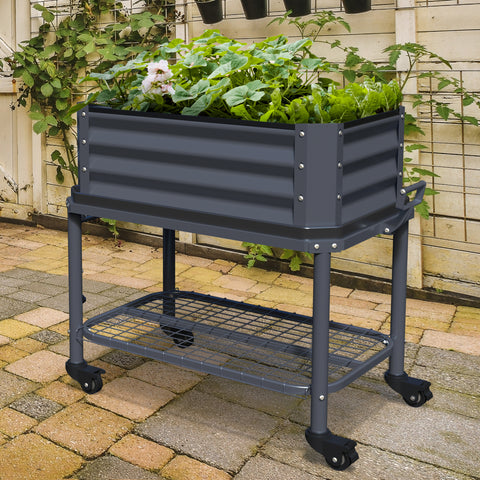If you don't know how to detect and respond to blight and leaf spot infections, your tomato plants are vulnerable and could die. Tomato wilt and leaf spot are common problems that all tomato growers have or will face. Knowing how to treat these diseases will help you avoid losing your entire crop.The following content also has some reference value for raised garden beds.
We gathered basic information about tomato plant blight, and how to treat them.
Leaf spot in tomato plants - signs and management
Leaf spot affects any stage of tomato plant development. Here are some of the main symptoms and signs of tomato leaf spot:
- Lower (more mature) leaves show the first signs of infection.
- Round yellow spots appear on the back of the leaves.
- The top of the leaf quickly appears blotchy and turns black or brown with a black "dot" in the middle.
Severely infected leaves will turn yellow, then brown, and eventually fall off the plant.
Leaf spot symptoms will develop in the direction of the plant, infecting the stem as it develops.
Fortunately, the fruit is rarely infected with the disease. However, crop volume and plant vitality are adversely affected.

Treatment: Once a plant or crop is infected, all measures are taken to prevent the spread of leaf spot, as the disease cannot be eliminated without destroying the infected plant.
- Carefully remove infected leaves and bury or burn them.
- Thin and dense leaves to get more air and light into the remaining leaves.
- Stake plants and make sure they are spaced far enough apart to allow enough air and light to penetrate.
- Remove debris from the ground around the tomato plant.
- Do not compost infected plants.
- Use organic sulfur or copper-based fungicides (as directed) to prevent spore germination.
- After handling infected plants, disinfect all gardening equipment with 1:10 parts of bleach and water.
Shoes, clothing, and gardening gloves are ways to spread the fungus and should also be disinfected (washed in hot water and thoroughly dried in a "hot" environment).
Tomato early blight - Symptoms and management
Early blight is a form of tomato blight caused by the fungus Gibberellus tomato. Affected plants will yield less production, and the fruit will be easily scalded by the sun due to falling leaves.

The main symptoms of tomato early blight include:
Lower leaves and stems develop dark (brown or black) rounded spots.
- Early blight can be easily identified by the rings formed around the leaf spots.
Unlike Septoria lycopersici, the spots may appear near the stem of the fruit and eventually spread to the fruit, causing it to rot on the vine.
- Lower leaves turn yellow and fall.
Because leaf spot and early blight infect tomato plants at the same time, they are often confused with each other under the same rainy or humid conditions.
Treatment: The best treatment for early blight is prevention. Once the plant is infected and the disease develops, it becomes more resistant to fungicidal treatments.
The following measures will help prevent the spread of early epidemics:
- Purchase and plant disease-resistant species.
- Planted on raised beds to improve soil drainage and prevent disease spread.
- Use methods that water the soil instead of plants. (The splashing water provides an opportunity for the disease to spread rapidly from plant to plant.)
- Use black plastic or landscape fabric as ground cover to provide a physical barrier between fungi and plant leaves.
Remove all affected plants at the end of the season and destroy them.
Symptoms and treatment of late blight in tomato plants
Late blight is a tomato blight caused by the fungus Phytophthora. The disease, which is common throughout the United States, occurs late in the growing season and usually only appears after flowering.

The main symptoms of late blight in tomato plants include:
- Lower, older leaves show symptoms first, appearing as gray spots soaked in water.
- As the disease progresses, the spots darken and white fungus grows under the leaves.
- The disease eventually infects the entire plant and its fruit.
- The most obvious feature of the disease is that the plant does not show symptoms until later in the growing season, whereas other similar pathogens show symptoms early in the growing season.
Treatment: The treatment and prevention measures of late blight are the same as those of early blight.
If not controlled early, the disease can easily spread throughout the field, leading to crop failure.
Don't lose your tomato crop to pathogens, which can be controlled once you know what to look for.
This paper introduces the basic information and control measures of tomato leaf spot, early blight and late blight.
If you do not act promptly when spots and wilt symptoms appear, it may greatly reduce the size of your crop or even wipe it out. By adhering to the measures outlined in this article, you will be more successful in saving your harvest and preventing the spread of these destructive pathogens.









